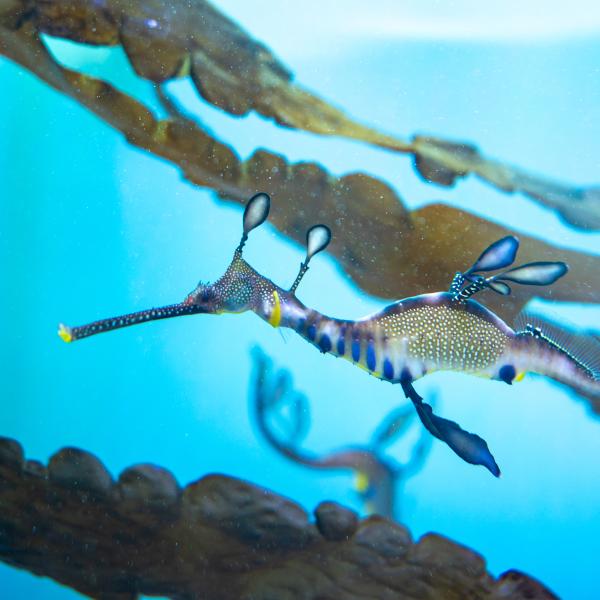Weedy seadragons have a small head with a long, skinny snout, and a delicate neck that leads into a sturdier body. Their tail, which can be longer than half their body, helps them cling to plants. Males and females are about the same size, but females usually have thicker bodies. They breathe through a small round opening, or gill, and their bodies are covered with hard, bony plates instead of scales.
These seadragons have small, leaf-like appendages that extend from their head, body, and tail. The number, color, and size of these appendages can change based on location and age. Their color can range from orange to reddish-purple, with yellow spots and purplish-blue bars along their sides. Their belly and back fins are almost clear. They have the ability to change colors to camoflauge with their surroundings.
Weedy sea dragons do not have teeth but eat by sucking in their food through their pipe-shaped mouth. A complex arrangement of bones that are moved by muscles to create a strong suction to pull in their food, like drinking through a straw. They eat constantly because they also do not have stomachs.
The outer skin of seadragons is solid, which limits their mobility when trying to escape from predators. They also lack a caudal fin, or tail fin, which limits their swimming abilities. Instead, they swim by quickly moving their belly and back fins, propelling themselves through the water and using their tails to steer. By adjusting the air in their air bladders, they can change their position in the water, allowing them to float vertically or move up and down. Weedy seadragons have fragile swim bladders, which means they can be affected by sudden changes in water pressure or depth. During storms, these changes often lead to unfortunate situations, with many seadragons being found washed up on the shore along with seaweed.









